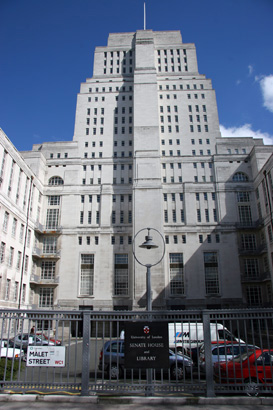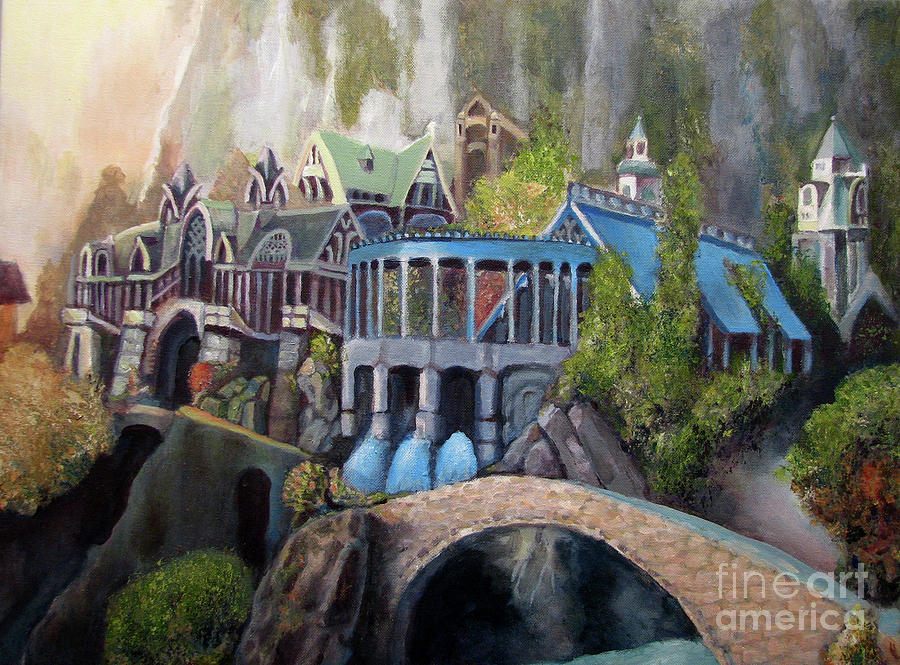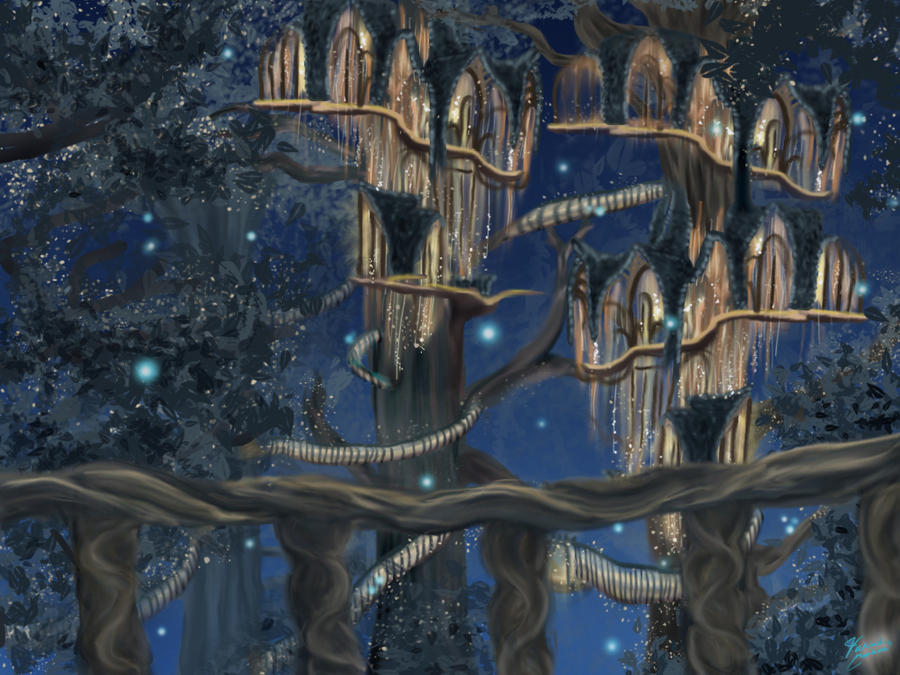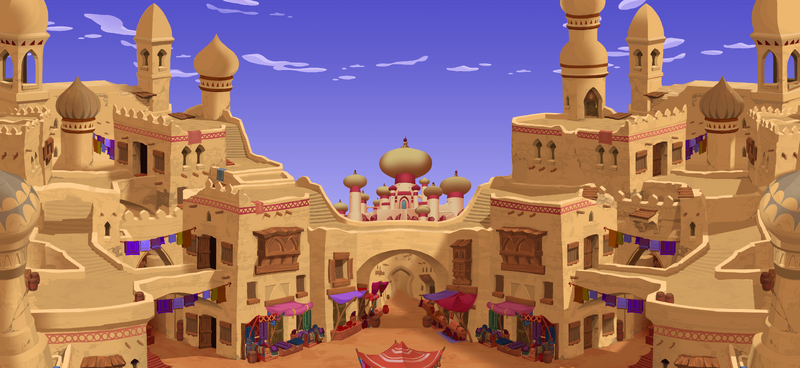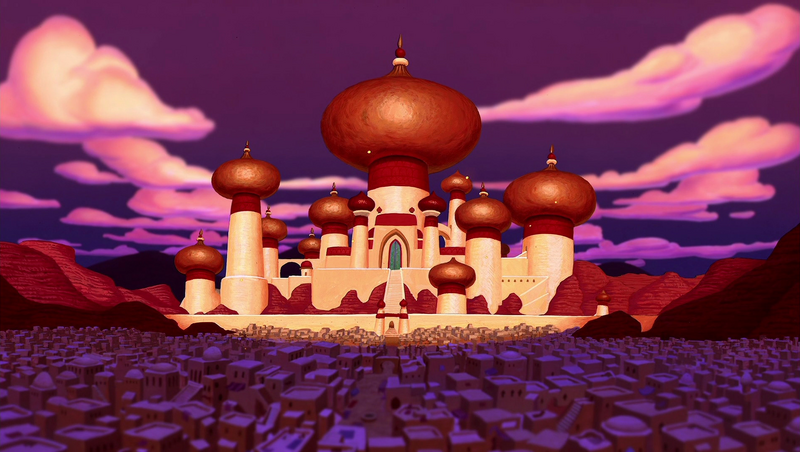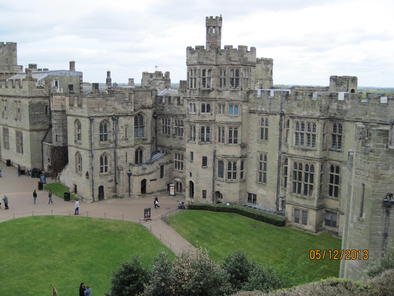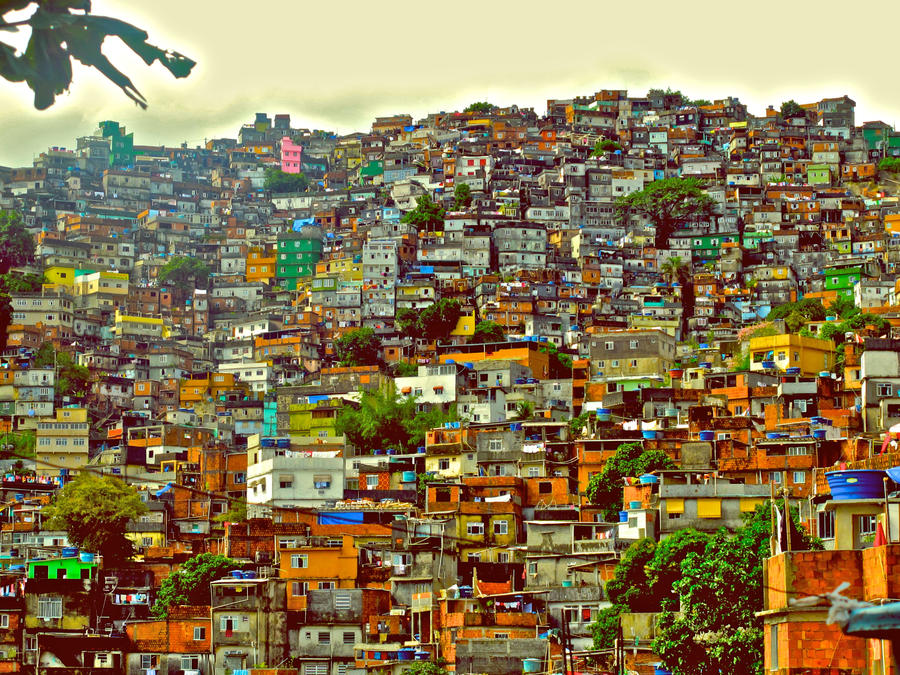Page 1 of 3
Your capital city's architecture?

Posted:
Sat May 02, 2015 4:54 amby Liberty and Alderney
What kind of architectural styles and designs define your capital's skyline? Is dense, urban living valued over urban sprawl? Does your major landmarks pay homage to Art deco design or postmodernist architecture? Are there shiny new skyscrapers sitting next to slums? Describe here the architecture that inform's your city's design and include pictures if you so desire.
Liberty city is defined for amassing one of the largest and most varied collection of buildings and skyscrapers in the world. Brownstone rowhouses, terraced townhouses, low-rise apartments and urban tenements are commonplace; especially in the boroughs of Broker and Dukes. Some of the more affluent neighborhoods; particularly in Dukes, have a higher concentration of larger single-family homes of Tudor Revival, Irish or Victorian style.
The borough of Algonquin hosts many modern landmarks and skyscrapers, in fact, Liberty City boasts some of the tallest Skyscrapers in the United States, with the most impressive being the Rotterdam Tower. Various points of natural parkland can also be found throughout Liberty City, the largest of which being Middle Park in Algonquin.
Due to the size and population demand of Liberty City, housing projects, towers and urban complexes are also commonplace throughout the various boroughs. They are, however, often stereotyped as being low-income while breeding high-crime rates, despite some housing projects in Liberty City being more affluent and having a lower crime-rate.
Mid Algonquin during the dayLower Algonquin at nightBroker's industrial buildings at Hove's BeachProjects and Subway at Bohan

Posted:
Sat May 02, 2015 5:13 amby Singaporean Transhumans
New Singapore, constructed on top of (and under) an artificial island between Sumatra and Borneo, demonstrates ultimate Singaporean efficiency. Over 75% of the city is located underground, arranged in a confusing, yet organized fashion of buildings and blocks. Central server towers hosting AIs, as well as Mass Fabricator factories, dominate much of the underground layers, and their arrangement sort of creates a parkour course for anyone brave enough to intrude. Above surface, the city is largely composed of low, three-floored buildings, inhabited by baseliners, and even infested by vermin such as headcrabs and zombies. The only outstanding feature of the above-ground is the State Technocrat's Building, a building completely copied from the Citadel, used for government purposes.
The structures themselves are bold, blocky and have sharp edges. These are usually straight towers that plunge up to the near-surface, and can be up to kilometres tall. Fabricator factories are usually large rings, some overlapping each other, while others intersect.

Posted:
Sat May 02, 2015 9:11 amby The Northern Kingdoms
Kronastad can remind one of a mix between Copenhagen and Stockholm.

Posted:
Sat May 02, 2015 11:28 amby Islaamistan
Emirabad, the city was based on a grid plan which was triangular in shape with its apex towards the Margalla Hills.
http://www.nationstates.net/nation=isla ... /id=406437

Posted:
Sat May 02, 2015 11:45 amby HYDRA-Russian Empire
---NEW PETERSBURG---
The centre of New Petersburg is built in an old style, with many buildings dating back to the Medieval Era. The direct centre is occupied by three massive buildings:
The HYDRA Duma/Senate House
Barlev Manor, the official residence of the High Chancellor (previously (225 years ago) Imperator))
and the grandest building of all,
The HYDRA-Imperial Capitol itself. All three buildings are in an ancient style, with some parts of Barlev Manor still being wooden. The majority of it, however, as well as the other two buildings, are made from stone. (Estimated between 8th and 12th Century AD)
The Inner Circle of New Petersburg (elite residences) are newer, though are still old (18th Century AD). These are mainly mansions.
Surrounding this is a high wall. The only way through is to go through HYDRA Castle, the oldest and most fortified part of New Petersburg. (Earliest traces - Motte and Bailey castle (6/7th Century AD)). For maximum security, the Inner Circle and Capitol area have their own airspace and can only be accessed through passport control and border control.
Then comes the outer circle, the largest sector of New Petersburg. It contains a mixture of ancient and modern buildings.
Finally are the suburbs. They are modern. They contain most of the large sopping malls and skyscrapers of New Petersburg. Never the less, New Petersburg is widely acknowledged to be one of the most beautiful cities in the world. It is dotted with parks and plazas, theatres and galleries, and much more.
On a separate island (man made) is New Petersburg International Airport. An underground train link takes one from there to New Petersburg Station. Located in the Outer Circle, it is the main train station of New Petersburg.
Your capital city's architecture?

Posted:
Sat May 02, 2015 12:05 pmby Parhe
What kind of architectural styles and designs define your capital's skyline? Is dense, urban living valued over urban sprawl? Does your major landmarks pay homage to Art deco design or postmodernist architecture? Are there shiny new skyscrapers sitting next to slums? Describe here the architecture that inform's your city's design and include pictures if you so desire.
The capital city itself, Hwangseong, is just a artificial square island less than two thirds the size of Washington DC with a population of 144. The architecture is largely composed of splendorous palaces inspired by those found in Korea and Japan. An exception is Jyusin Tower, the RL proposed Nakheel Tower, in the northern part of the island.

Posted:
Sat May 02, 2015 4:51 pmby Thervingia
Mikilgards is a cosmopolitan city with diverse architecture. There are 15 temples in Mikilgards. Like most medieval towns, Mikilgards was developed around its town hall. The main artery, Galuke Street, links the Royal Palace with the town hall. Other streets meander through the palaces of feudal lords and landlords, temples, shops, and craftsmen's workrooms. Narrow, curved streets and intimate courtyards developed in the radial layout of medieval Mikilgards.
A small overview of local architecture.

Posted:
Sun May 03, 2015 4:29 amby Greater Mackonia
Sterkvelso is built across two islands with various canals criss-crossing the city, during the early 2010s much of the cities old, neo-classical colonial buildings were destroyed and replaced with buildings of a new style best described as a cross between Art Deco and Gothic.

Posted:
Sun May 03, 2015 6:37 amby North Yankton State
Ludendorff was established in 1945, and currently it still retains its old-style buildings. Not many new buildings were built, old abandoned buildings usually get renovated to be reused.

Posted:
Sun May 03, 2015 6:53 amby Tolmakia
Meddli City was original built by the British, so old buildings have inherited British or British inspired architecture. Since independence, the buildings in the capital have become more modern, and most today adopt futuristic or postmodern styles.

Posted:
Sun May 03, 2015 9:15 amby Czesc

Posted:
Sun May 03, 2015 9:18 amby Jagellion

Posted:
Sun May 03, 2015 10:12 amby Mha Thalas
Emyma Ancalen is the oldest city and largest in Mha Thalas.

Posted:
Fri May 08, 2015 1:10 amby Aikoland
Since the Islamic Queendom is a Middle Eastern nation, the architecture of our capital is, well, very Middle Eastern. People unfamiliar with our country at first believe that we are primitive, as our buildings look very old and traditional. The truth, however, is that having our buildings resemble old and traditional buildings from the outside looks much better than large modern skyscrapers everywhere.
The capital of Agrabah also has the
very large palace located just on the outskirts of the town.

Posted:
Sat May 09, 2015 6:40 pmby Anollasia
Our capital, Jefferton, has many architectural styles. Some include neoclassical, Ottoman, classical, modern, art deco, and baroque.

Posted:
Sat May 09, 2015 6:52 pmby Penguin Union Nation

Considering the capital of the Penguin Union is one giant city-fortress, architecture is just applicable to the city as a whole. Everything inside is like inside a large office building and/or mall.

Posted:
Sat May 09, 2015 7:53 pmby Phileria

Posted:
Fri May 15, 2015 8:54 pmby The Vines
The capital city of Asterville tends to follow an
expressionist style. Its organic forms blend in with the surrounding environment, such that it's often hard to see where the town ends and the forest begins. Not that there was such a distinction in the first place, of course.

Posted:
Sat May 16, 2015 1:17 amby Nizov
Murin subwayMurin subway is the subway of the city of Murin, it has amazing works of long-lasting rennaisance architecture, a place worth visiting.
Palatij Seper-Palatie Superiore at dawnPalatij Seper(In Nizovski) or else known as Palatie Superiore(In Estenian) is the palace where the Dynastis that have ruled Estenia had their seats there. Since the 9th century, it was the place that all the Kingdoms and Empires wanted to have but the Estenian empire kept the city uncaptured all that time. Even after the ruthless Nizovski War the palace stayed intact. This palace is a fine work of architecture both the in the exterior and the
interior.
Murin Financial CenterThe Murin Financial Center, is the most important complex of buildings of Nizov as many companies, both national and international have their seats there, all the ruing companies combined in the area control 411 billion Estos or 822 billion US$, which is a large sum of money. Although only half of them are being used by Nizovski companies the rest are used by international companies.
Eastern suburbs of MurinEastern suburbs of Murin, they might seem as a cultural paradise and a not intensely populated area, might we inform you that it holds 2 million people, making them the second largest suburbs population. As for the arts the place produces, are unbelievable.
Pitov StreetPitov street, the most famous street of the eastern suburbs, it is filled with amazing works of art since the rennaisance. It is is a place to drink a cofee and enjoy your morning while you watch the children playing football.
Vesterniej Portie-Westernu PortuThe Western Port of Murin is also an amazing piece of architecture and useful for many ships that enter Nizov.

Posted:
Wed May 20, 2015 6:53 amby Minroz
In the words of some foreigners who're happens to be Star Wars fans, they remarked Zhongyang is like Far East Asian Coruscant with the fairy tale twist.

Posted:
Wed May 20, 2015 7:26 amby Sir Donald
The capital city is small, at around 60 square miles. It's all completely new, modern architecture. Well organized and planned out by a central planning committee. Housing, which is provided by the government, all exists in one district, along with the schools and parks. Then there's also the industrial district, the government district, and the entertainment district. Cars are outlawed, instead public transportation is provided for free. We rely on nuclear power, with the main plant underneath the city.

Posted:
Wed May 20, 2015 8:50 amby Leritorius
A picture of the Citadel of Læritus Majoris, capital city of our Kingdom. Most of our architecture follows this style, even though not all buildings are that tall...

Posted:
Mon Jun 08, 2015 6:44 pmby Oceania Oriental
"To look upon Santa Cruz is to look upon a great patchwork into which every style, every era, every cultural movement has been woven" -Juan Batalla, famous Oceani architect
As Batalla says, our architecture is a highly varied patchwork mix. With buildings 3000 years old and buildings two months old, the architecture of Santa Cruz is incredibly diverse. You have Romanesque, Gothic, ancient, Stave, eastern, neo-Gothic, Italianate Renaissance, Victorian-Edwardian and many more. After the 1920s, though, most buildings were built in revivals of older styles so some appear much older than they actually are.

Posted:
Tue Jun 09, 2015 3:18 amby Etyria
Vaelys is an old and (totally objectively) beautiful city. the city faces the sea by the South, and is cut in half by the Couronne River. near the coast lays the industrial periphery and the shining skyscrapers of the Vaelys Afairs District (think The City in London). on the West bank of the Couronne, in the center of the city, there is the Historical Center. The oldest building is the Watchtower, the only part left of the medievalc astle of the Duke of Couronne. Near this old tower lays the magnificent Imperial Palace, divided in Three parts: the nortern wing is the office of the Ministers, excluding the prime minister. the center of the Palace is the Hemisphere, where the parliament meets, and above is the office of the Prime Minister. the Southern Wing is where the Emperor lives. Around this Palace, the city is full of old buildings, with the large shadow of the Saint Vaelthanos Cathedral over them. on the Eastern Side lays New Vaelys. more modern buildings and supermarkets makes this place the most croweded in all the country, with more than 7 million inhabitants. the North of Vaelys, the Upper City, is where you can find the bes High Schools in al Etyria: the Imperial College (law school), the Crown Academy (science and medicien school), and last but not least, the National School of Humanism (pretty much everything else). the global architectuer of the Center and the Upper city is made of marble and yellow stones, with pretty columns everywhere
to end this visit of the Imperial City, here is a quote from Adrien d'Auberlas (1889-1976), a famous Etyrian writer and poet:
"I saw every corner of Etyria during my life. I saw the natural beauty of the wild forests, I felt the unique feeling of seeing half of the Free Cities from the towers of Rancour Castle, I experienced the simple happiness of living in a farm of Verlande, but nothing approaches the majesty of the shining jewel of Etyria: Vaelys! No word could match the beauty of Vaelys, which penetrates your very Soul. No life can be truly complete without visiting Vaelys."
Memories of an Etyrian Traveler, 1968

Posted:
Tue Jun 16, 2015 6:50 pmby Hubyaveyabo
Syscovi is a massive megacity that is the product of the people getting power back in 1863. It is the economic and cultural center of the eastern half of the DRH. It consists of 4 quarters named Piso, Nabar, Guangyon, and Lychee.


